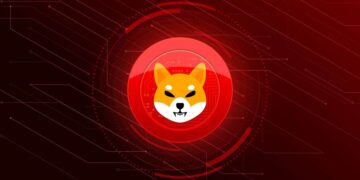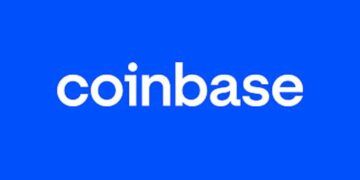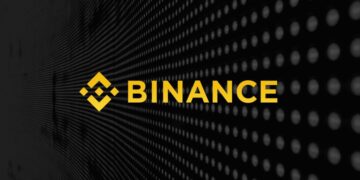Getting open-source and synthetic intelligence (AI) on the identical web page is not simple. Simply ask the Open Supply Initiative (OSI). The OSI, the open-source definition steward group, has been engaged on creating an open-source synthetic intelligence definition for 2 years now. The group has been making progress, although. Its Open Supply AI Definition has now launched its first launch candidate, RC1.
The newest definition goals to make clear the customarily contentious discussions surrounding open-source AI. It specifies 4 elementary freedoms that an AI system should grant to be thought of open supply: the flexibility to make use of the system for any goal with out permission, to review the way it works, to change it for any goal, and to share it with or with out modifications.
To date, so good.
Nonetheless, the OSI has opted for a compromise concerning coaching information. Recognizing it isn’t simple to share full datasets, the present definition requires “sufficiently detailed details about the info used to coach the system” relatively than the total dataset itself. This method goals to stability transparency with sensible and authorized concerns.
That final phrase is proving tough for some folks to swallow. From their perspective, if all the info is not open, then AI giant language fashions (LLM) primarily based on such information cannot be open-source.
The OSI summarized these arguments as follows: “Some folks imagine that full, unfettered entry to all coaching information (with no distinction of its variety) is paramount, arguing that something much less would compromise full reproducibility of AI methods, transparency, and safety. This method would relegate Open-Supply AI to a distinct segment of AI trainable solely on open information.”
They don’t seem to be fallacious.
Sure, ideally, the OSI agrees all of the coaching information must be shared and disclosed. Nonetheless, there are 4 totally different information sorts: Open, public, obtainable, and unshareable information. “The authorized necessities are totally different for every. All are required to be shared within the kind that the regulation permits them to be shared.”
Briefly, “Knowledge may be arduous to share. Legal guidelines allowing coaching on information usually restrict the resharing of that information to guard copyright or different pursuits. Privateness guidelines additionally give an individual the rightful capacity to manage their most delicate data — like choices about their well being.”
The discharge candidate additionally addresses different key elements of AI methods. It mandates that the entire supply code used for coaching and working the system be accessible below OSI-approved licenses. Equally, mannequin parameters and weights should be shared below open phrases.
Stefano Maffulli, the OSI’s govt director, emphasised the significance of this definition in combating “open washing” — the follow of firms claiming openness with out assembly true open-source requirements. “If an organization says it is open supply, it should carry the values that the open-source definition carries. In any other case, it is simply complicated.”
In an Open Supply Summit Europe interview in Vienna, Austria, Mafulli advised me it isn’t simply open-source purists who’re sad with the proposed OSI AI Definition. The opposite “are companies, who regard their coaching schemes and the best way they run the coaching and assemble and filter information units and create information units as commerce secrets and techniques. They do not wish to launch these. They suppose we’re asking an excessive amount of. It is an outdated argument that we heard within the 90s when Microsoft didn’t wish to launch their supply code or to construct directions.”
As well as, RC1 has two new options. The primary is that open-source AI Code should be sufficient for downstream recipients to grasp how the machine language coaching was completed. Coaching is the place innovation is going on and, in response to the OSI, that is “why you do not see companies releasing their coaching and information processing code.” Given the present standing of information and follow, that is required to meaningfully fork AI methods.
Lastly, new textual content acknowledges that creators can explicitly require copyleft phrases for open-source AI code, information, and parameters, both individually or as bundled combos. An instance of this might be if a “consortium proudly owning rights to coaching code and a dataset determined to distribute the bundle code and information with authorized phrases that tie the 2 collectively, with copyleft-like provisions.”
Thoughts you, the OSI continued, “This form of authorized doc does not exist but, however the state of affairs is believable sufficient that it deserves consideration.”
Do not suppose the definition is finished and dusted but. It isn’t. True, the OSI does not plan so as to add new options. From right here on out, they and their companions will work on bug fixes. The OSI admits that there should be “main flaws which will require important rewrites to the textual content.” Nonetheless, the primary focus will probably be on the accompanying documentation.
As well as, the OSI has “realized that in our zeal to resolve the issue of information that must be offered however can’t be provided by the mannequin proprietor for good causes, we had did not clarify the fundamental requirement that ‘when you can share the info you have to.'”
If all goes easily, the OSI plans to launch the ultimate 1.0 model of the Open Supply AI Definition on the All Issues Open convention on October 28, 2024. Hold tight, people. We’re getting there.












![Why Ethereum [ETH] address outflows may be headed for DeFi](https://cryptonoiz.com/wp-content/uploads/2023/03/AMBCrypto_An_image_of_a_stylized_Ethereum_logo_with_arrows_poin_22f2aeff-c7bb-4c7d-aec7-547a37a35e82-1-1000x600-360x180.jpg)





























